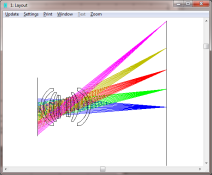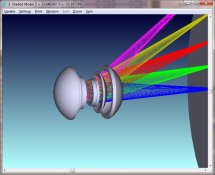Dr Croubie
Member
There are tons of heavier lenses available in 8 x 10 for almost all focal lengths.
What there aren't a lot of is light weight lenses that cover 8x10 with the generous movement in this focal lengths.
I did recently pick up a particularly interesting lens called a Graphic-Kowa 210 f/9, what's interesting about it is that I'm told that this is an "earlier design" which had a coverage for 11x14 with a tiny bit of wiggle room, whereas the later generations of this same lens were all only 8x10 coverage.
If this is true, the design already exists for a 210mm that covers 11x14 with movements, that could possibly be improved with modern technology.
Now I have purchased the lens and have it in my kit, and have shot a few 8x10 images with it, but I do not have access yet to an 11x14 camera to truly test the theory of the seller that it should cover 11x14 because of some kind of lens element reflection number.
Well, from the design so far being at 'about 200g of glass', I'd call that lightweight. Put that in a mount and shutter and it's still probably less than 500g / 1lb.
I think I said earlier that a 155mm Grandagon or a 165mm Super Angulon are both well over 1kg, nearly 3lb. So a weight savings of 50% or better is great.
And this new one is f/6.8 in a #1, the SA is f/8 and both are in a #3.
I don't think you'll get much smaller or lighter than that.
As for the 210mm Kowa, the 'counting of reflections' is how to tell what version it is.
There were two 'Computar' 210mm lenses, both are on the list here.
One is the 'computar symmetrigon' f/6.3, 4/4 style, specced to cover 308mm (I've got one of these and it almost reaches 8x10 at min aperture but not completely, I'll use it for 4x10s fine though).
The other is the 'computar f9' f/9, 6/4, specced to cover 325mm (although allegedly goes further stopped down), this was also sold as 'graphic kowa' and is the version you've got.
I'm not sure which of the 'symmetrigon' and 'f9' versions is the earlier, but it's strange that Fujinon lenses also had larger coverage in their Single Coated 'W' series (80 degrees, 210mm = 352mm IC) compared to their EBC 'NW' series (71 degrees, 210mm = 300mm IC). They also changed from 6/4 to 6/6 for most in the new series (210 NW was 6/5 allegedly), so the newer ones were probably sharper and better corrected, but they reduced the coverage. Or the 'coverage' may actually be fairly similar but their definition of 'acceptable' narrowed for the newer series? I'd have no idea without testing both side-by-side.














